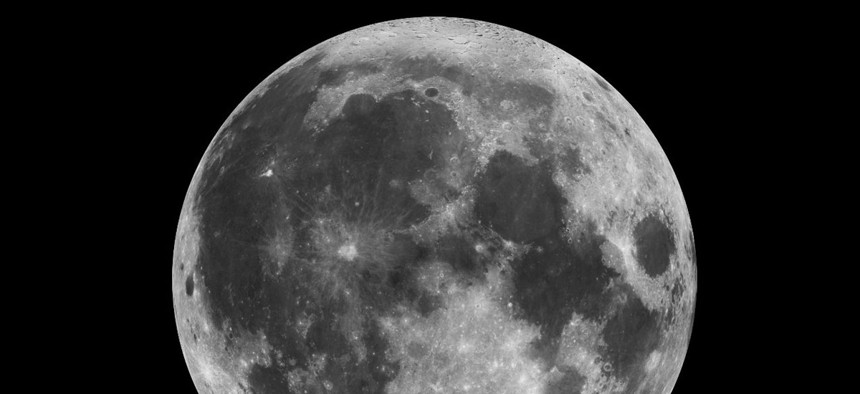
NASA file photo
NASA Will Hire Private Companies To Hunt Water On The Moon
The U.S. is creating another market for business in space.
The U.S. space agency is kicking off a $2.6 billion push to hire private companies to ferry scientific instruments to the Moon.
NASA administrator James Bridenstine announced nine companiesthat will be able to bid on NASA contracts to search the Moon for water, hydrogen, and other resources, laying the ground work for a potential human return. The last time a person walked on the Moon was in 1972.
NASA did not explain why the companies were selected, or how funding will be allotted between them for flights that could begin as soon as the end of 2019.
“What should decide on the success and viability of each one of those partners should be how they deliver the services we want,” Thomas Zurbuchen, who leads NASA’s science directorate, said today. “We did not go into very deep background, the technical background; frankly, that is going to come next.”
The decision comes after NASA cancelled a $100 million project to build its own prospecting lunar rover. Instead, the agency will use the public-private partnership model that successfully developed SpaceXand Northrop Grumman rockets to bring cargo to the International Space Station, and that it is pursuing with SpaceX and Boeing to fly astronauts next year.
Bridenstine and the Trump administration more broadly have pushed to expand the new model of buying services, not hardware, from private companies. Yet the $2.6 billion budget for the Commercial Lunar Payload Services Program is tiny compared the $12 billion (pdf) the agency is paying Boeing for a traditional heavy rocket called the Space Launch System, which may fly humans into deep space sometime after 2020.
The mounting delays in launching that mission contributed to the need for the services program.
“We need to do science on the surface of the Moon, but NASA has focused the Moon within the human exploration directorate,” Bridenstine said. This new program will come under NASA’s science directorate, led by Zurbuchen, a Swiss-American physicist.
“The Moon is full of secrets,” Zurbuchen said. “There are parts of the Moon, especially when the sun and the Earth are on the same side of the Moon, it’s so quiet there that we can see all the way back to the dawn of the universe, in a way that we can’t do anywhere else, not even on satellites. On the Moon, there is water…and we want to learn how to use those resources, because we want to go back with humans.”
NASA’s partner companies for the new program range in size from veteran contractors like Lockheed Martin Space Systems, which built the lander NASA deposited on Mars this week, to brand-new consortiums like Orbit Beyond, which was incorporated in September to participate in this program. Draper, an aerospace consultancy, and engineering firms like Deep Space Systems and Intuitive Machines have made advanced components for NASA projects in the past.
Two of the companies, Astrobotic and Moon Express, are explicitly focused on the business of sending robots to the Moon, with Astrobotic already scheduled to launch its own mission next year. Masten Space Systems and Firefly Aerospace, the last two participants, are focused on building launch vehicles but neither has launched anything into space.
Neither SpaceX nor Blue Origin, the space companies led by Elon Musk and Jeff Bezos respectively, are participating in the program. Both companies, however, have lunar ambitions, with SpaceX planning a tourist trip around our natural satellite sometime in the mid-2020s, while Blue Origin has announced a plan to develop its own Moon lander.







